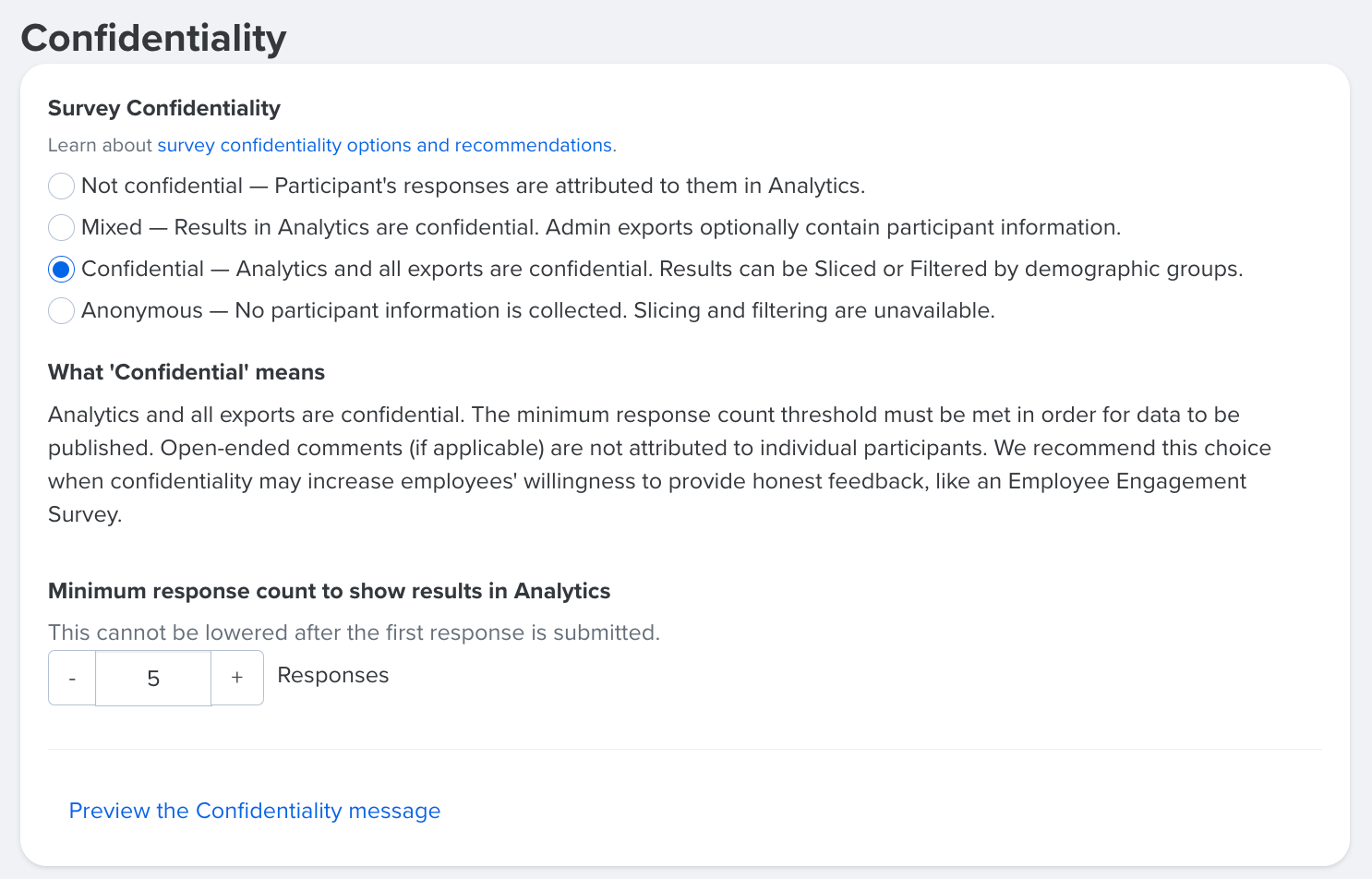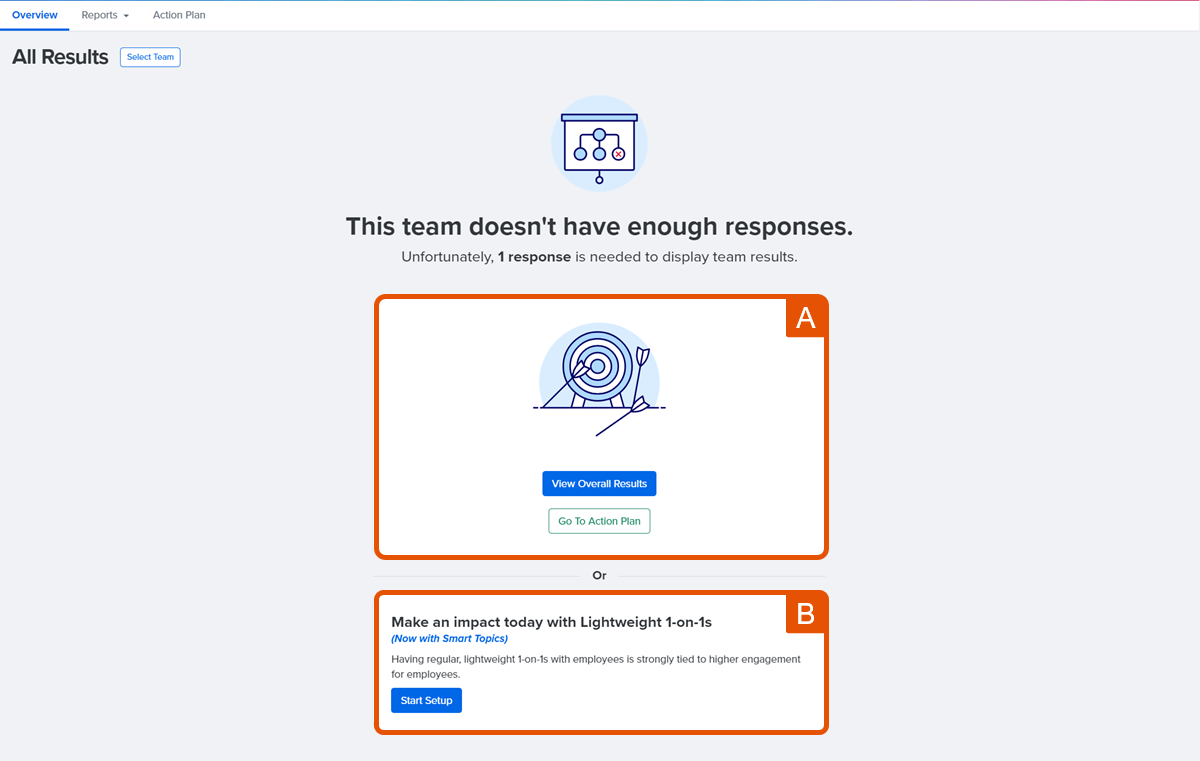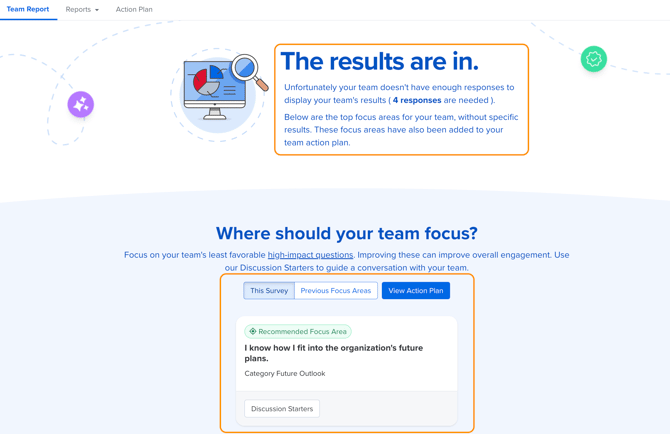What is the Minimum Response Threshold?
The minimum response threshold is the number of responses required to view Analytics for a confidential survey or cycle.
In this article:
Overview
The minimum response threshold is the number of responses required to view the analytics for a confidential survey or cycle.
Admins must set a minimum response threshold for all confidential surveys or feedback cycles as part of the cycle setup. This ensures that employee voices are kept confidential and prevents managers from identifying employees via their responses.
An example when configuring confidentiality settings for a new survey:

Feedback
Discover even more ways to support your team and grow with Quantum Workplace. Explore what's possible.
Confidential Feedback Cycle
For a confidential Feedback cycle, the minimum response must be met for each Feedback recipient before the Feedback is visible.
For example, if the minimum response threshold for a given Feedback cycle is three, then the Feedback can only be viewed after the cycle receives three responses.
Confidential Feedback Cycle with Feedback Groups
For confidential Feedback cycles that use Feedback Groups, the minimum threshold applies to each Feedback Group.
As an example, if you launch a 360 Feedback cycle where peers and direct reports answer different questions for the Feedback recipient, that feedback is only visible once the Feedback Group meets the minimum response threshold.
Confidential Feedack Cycles with Peers & Direct Reports
For a confidential cycle involving peers and direct reports with a minimum response threshold of three, if the threshold is met but two of the three responses are from direct reports, you can only view the response from peers, not the direct reports.
An exception to this is for cycles that include the Manager Feedback Group as the manager's feedback for their direct report is always attributed, and therefore visible.
It's recommended to set the minimum response threshold realistically low for confidential cycles that use Feedback Groups.
Surveys
View Survey Analytics as an Admin
For confidential surveys, admin users can view a survey's analytics once the minimum response threshold is met.
View Survey Analytics as a Manager
If manager analytics are enabled for a confidential survey, the manager can view a survey's analytics once the minimum response threshold for their downline is met.

- A. View Overall Results & Go to Action Plan:
- For managers with full-upline clickability permissions enabled, if your downline does not meet the minimum threshold, you can view the survey analytics for an upline manager who has met the minimum threshold or view your team's Action Plans- learn more about roles and assignments
- This ensures you still have survey results to analyze and act on that are still relevant to you and your team.
- B. Lightweight 1-on-1s:
- For organizations with access to 1-on-1s, managers can also quickly schedule regular 1-on-1s with their direct reports to discuss results and improve team engagement- learn more about 1-on-1 best practices
In the event that the minimum threshold is not met, if the survey has at least one response, you can still overall results and create Action Plans.
Here's an example of a Team Report where the minimum number of responses was not met, but there was at least one response:

Recommended Settings for Engagement Surveys
Quantum Workplace strongly recommends using the Confidential setting for Engagement surveys.
The Mixed Confidential option is recommended if your organization requires access to raw responses for business intelligence or analytics reasons.
A minimum threshold of five is recommended for Engagement surveys using the Confidential or Mixed Confidential setting to protect confidentiality and uphold participant trust in the survey. In this case, this means that a minimum of five people in any given team or department must complete the survey to view the results for the team or department, respectively. This applies to visibility when using slices and filters when viewing survey results.
While a lower minimum threshold may help you view feedback for smaller groups, it may also cause employees to avoid participating or prevent them from responding honestly. A minimum threshold less than five is not recommended if there are signals that employees have low trust in the survey process, e.g. low survey response rate, comments expressing confidentiality concerns, etc.
